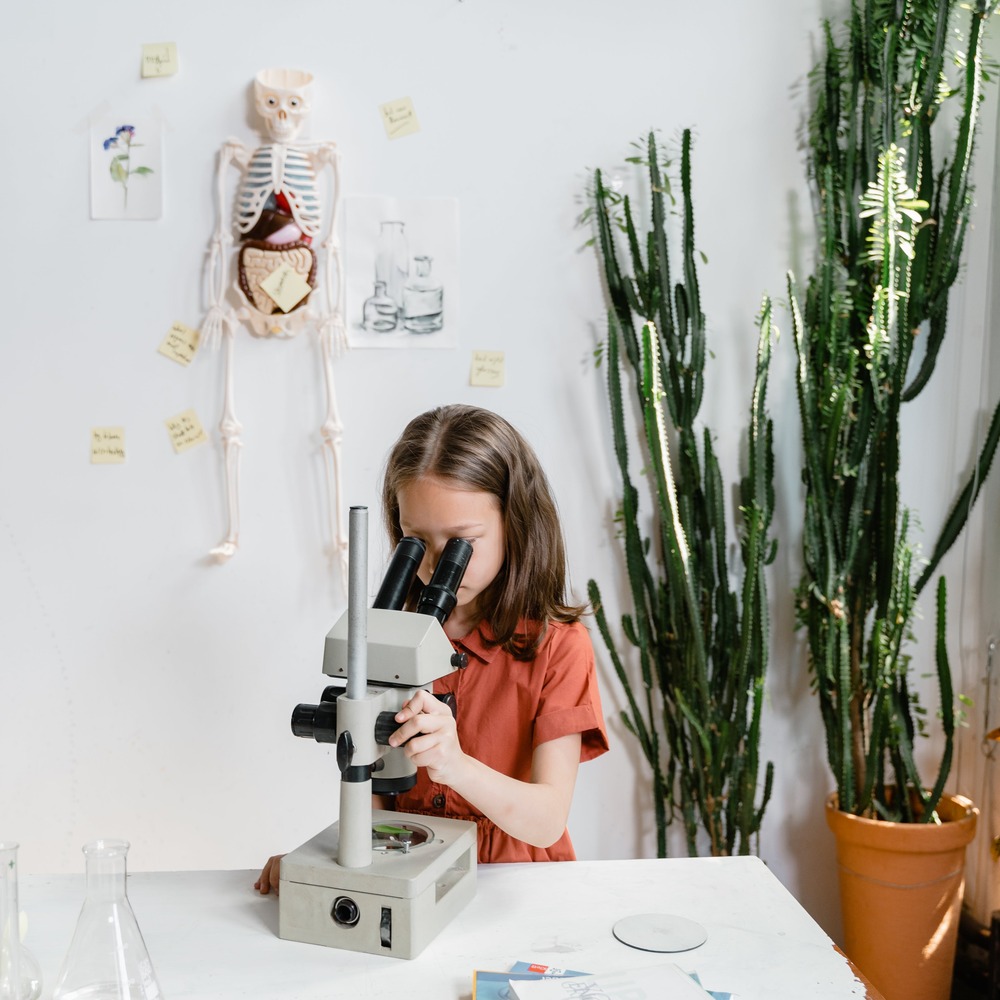Plants make for an invaluable addition to any setting, classrooms being no exception. Studies have demonstrated the various advantages of adding plants into classrooms - both teachers and students can reap considerable advantages by having plants present.
Improved Air Quality
Houseplants play an invaluable role in improving indoor air quality by filtering out harmful toxins and pollutants, which has numerous health advantages such as improved respiratory health, reduced allergies, and an increase in energy levels. Integrating plants into classrooms offers more than just aesthetic appeal; it significantly enhances air quality, benefiting both teachers and students. Plants act as natural air purifiers, absorbing pollutants and releasing oxygen, fostering a healthier learning environment.
This symbiotic relationship between plants and humans reduces the concentration of harmful airborne substances, such as volatile organic compounds. Improved air quality has been linked to increased cognitive function and better overall well-being, positively impacting academic performance. Educators can harness the power of nature by incorporating these 10 tips, creating vibrant, oxygen-rich spaces that promote a conducive atmosphere for learning and growth.

Decrease Stress Levels
Simply being near plants has been shown to reduce stress and promote relaxation - something both teachers and students could benefit from if feeling overwhelmed by school obligations. Integrating plants into educational environments can significantly reduce stress levels for both teachers and students. The natural presence of greenery has been proven to create a calming atmosphere, fostering a positive learning environment. Teachers, facing the demands of a dynamic classroom, can benefit from the soothing effects of plants, promoting a sense of well-being.
Additionally, the visual appeal of plants stimulates creativity and enhances concentration. These botanical additions also improve air quality, ensuring a healthier space for everyone. As teachers embrace the benefits of incorporating plants, classrooms become not only educational hubs but also sanctuaries of tranquility, ultimately contributing to decreased stress levels.
Increased Focus and Concentration
Studies have demonstrated the ability of nature to help enhance focus and concentration. This may be partially attributable to plants helping reduce anxiety levels which otherwise interfere with cognitive performance. Scientific studies demonstrate that exposure to nature positively influences cognitive function, reducing mental fatigue and increasing attention spans.
In classrooms adorned with greenery, educators observe improved concentration levels in students, leading to heightened academic performance. The calming presence of plants fosters a conducive learning atmosphere, promoting a sense of tranquility that aids in information retention. As teachers prioritize plant inclusion, they witness a transformation in the overall classroom dynamic, cultivating an environment that nurtures sustained focus, enriching the educational experience for all.
Increase in Creativity and Productivity
Plants may help increase creativity and productivity. Studies have demonstrated that being near plants increases blood flow to the brain, helping improve cognitive function as well as sparking creative thought processes. The natural elements not only create visually appealing environments but also foster a positive atmosphere for both teachers and students.
Plants have been linked to improved air quality, leading to better concentration and cognitive function. They serve as engaging teaching tools, offering hands-on lessons in biology and ecology. Additionally, the presence of greenery instills a sense of responsibility and care among students as they tend to the plants. These 10 tips illuminate the multifaceted benefits, from heightened focus to a more vibrant and dynamic learning environment.

Improved Mood and Emotional Well-Being
Plants have an incredible effect on mood and emotional wellness. Studies have proven that spending time outdoors can decrease feelings of anger, sadness, and depression. Integrating plants into classrooms offers more than just aesthetic appeal; it significantly enhances the emotional well-being of both teachers and students. The vibrant greenery promotes a calming atmosphere, reducing stress and fostering a positive learning environment. Studies suggest that exposure to plants can elevate mood and concentration levels, leading to enhanced cognitive performance.
Teachers who incorporate greenery into their classrooms report a heightened sense of job satisfaction and reduced fatigue. The nurturing aspect of plant care also encourages a sense of responsibility and teamwork among students. Ultimately, the presence of plants becomes a catalyst for improved emotional health, creating a harmonious and uplifting space for both educators and learners alike.
Strengthened Sense of Interconnection With Nature
Bringing plants into the classroom can strengthen students' connection with nature and foster greater appreciation of its significance and conservation efforts. This could result in a deeper appreciation and understanding of conservation initiatives amongst their peers. Students benefit from this botanical inclusion, experiencing improved focus, reduced stress, and enhanced overall well-being.
Teachers find that classrooms with plants become vibrant learning environments, where students connect with the natural world. Additionally, cultivating and caring for plants instills a sense of responsibility and teamwork among students. As living organisms, plants create a dynamic learning atmosphere, sparking curiosity and providing valuable lessons about ecosystems and sustainability. Including plants in classrooms is a transformative approach, offering both educational and psychological advantages.
Promote Physical Activity and Healthy Habits
Caring for plants can encourage students to become more physically active while building healthy habits. From watering, weeding, repotting plants, and pruning back branches as exercise sessions to understanding nutrition and sunlight's vital roles in plant development - caring for plants provides students with plenty of physical activities while teaching important lessons! Students benefit from increased oxygen levels, improved concentration, and enhanced mood. Teachers can seamlessly integrate botany lessons into various subjects, promoting hands-on learning.
Tending to plants instills a sense of responsibility and teamwork, encouraging physical activity as students care for their green companions. Moreover, the presence of plants reduces stress and anxiety, contributing to overall well-being. By embracing the natural world within educational spaces, educators cultivate a holistic approach to health, nurturing both the minds and bodies of their students
Improve Learning and Cognitive Development
Studies have demonstrated that students learning in classrooms filled with plants often achieve higher test scores and see greater cognitive development due to plants creating an engaging learning atmosphere that's less distracting and stressful for learners.Incorporating plants into classrooms proves to be a transformative strategy, significantly enhancing learning and cognitive development. Beyond aesthetic appeal, the presence of greenery positively influences students' concentration and memory retention.
Research indicates that exposure to nature fosters a calming environment, reducing stress and anxiety levels. Additionally, plants promote cleaner air, contributing to better overall health. Teaching about plant life cycles and care instills a sense of responsibility in students. Engaging with nature also sparks creativity and problem-solving skills. By integrating plants into the learning environment, teachers empower students with a holistic educational experience that extends beyond traditional academic boundaries.

Reduce Absenteeism and Improve Attendance
Plants can help schools reduce absenteeism and improve attendance rates by creating an engaging school environment, where students feel connected and enjoy spending time around plants. Students who feel engaged with their learning environment and enjoy spending time among plants are more likely to come and attend class regularly and remain engaged throughout their educational experience. And works about plants develop your horizons for this you can ask the help “write my essay online”.
Research shows that greenery enhances air quality, fostering a healthier environment that reduces illness-related absenteeism. Additionally, plants create a calming atmosphere, promoting better mental health and reducing stress among both teachers and students. Their presence has been linked to increased focus and productivity, contributing to a more engaging learning environment. Encouraging responsibility through plant care instills a sense of ownership and commitment, fostering a supportive classroom community. As a result, incorporating plants emerges as a multifaceted strategy to enhance attendance rates and overall well-being in educational settings.
Established a More Welcoming Classroom Environment
Plants can help create an inviting and welcoming classroom atmosphere. Not only can plants make any classroom feel warmer and cozier, they may even reduce noise levels for a calmer classroom atmosphere.
You might want to include these additional tips:
Start getting your students involved with caring for plants to teach them about responsibility and caring for living things. Utilise plants as a starting point to teach various subjects - mathematics, science, and art among them!
Celebrate each season through your plants! For instance, decorate your classroom with autumn leaves during autumn class or plant spring flowers when spring rolls around, more about plants you can read in this article: Benefits Of Integrating Flowers And Plants.
Have some fun with plants! There are so many creative ways you can incorporate plants into your classroom; use your creativity and come up with ideas that work best for you and your students! I hope these tips assist in creating a more plant-filled classroom!
By following these tips, teachers can create an inviting classroom space that not only looks lovely but is also conducive to student health and well-being.
Conclusion Integrating plants into classroom decor is an easy and cost-effective way to foster an atmosphere conducive to positive and successful learning environments. Plants can improve air quality, decrease stress levels, enhance focus, and inspire creativity - as well as boost the physical and emotional well-being of both teachers and their pupils. They should consider including plants when decorating their space!










